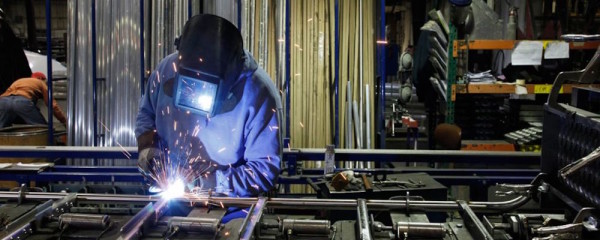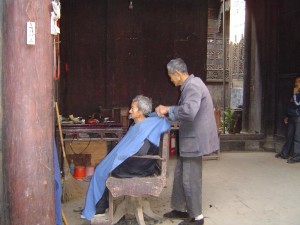05
May 2016
CHINA’S MANUFACTURING SECTOR NOW
As we know, currently China’s economic condition is not really good. After periods of massive growth and development, the manufacturing sector is surely changing. Many reasons and factors define this change. Things like demographics change, hiring practices, technology, and markets are changing China’s manufacturing sector. We will discuss some of them in this article and don’t worry! These changes are not that negative. It will just change the way investors operate their factories and presents new opportunities for growth.
Demographics Change
Maybe some of you have heard that China is banishing its one-child policy and last time, they established a new policy that allowing, even encouraging its people to have 2 children. Those workers that contributed in China’s double digit growth have been aging and there is an unbalance population here in China. Older people occupy most of Chinese population, whereas younger people population is not that big. On the other hand, China needs its younger generation to contribute on its growth. But, even the government has released the new 2-child policy, still based on the citizen interview that I watched, they feel pessimistic about that. My colleague also said that if she had one more child, there was no reward that she got of having so. In addition, based on the interview that I watched, citizen said, it would be very costly.
China’s aging population
Hiring Practices
To handle the growth of the domestic service industry, growth in China’s Western regions, and more stringent labor protection laws, factories are changing who and how they hire their people. Generally speaking, Chinese employers favored hiring women for labor-intensive industries. But, nowadays, the number of men working in these areas is outstanding. It is caused by many women preferred to join the service sector. In 2013, service sector surpassed manufacturing sector and it was the largest contributor to China’s GDP. The “lifestyle and trend” businesses, like restaurant and coffee shops have attracted many unskilled female workers who enjoy better conditions than in many manufacturing positions.
Another issue is about the migrant workers. Migrant workers have composed at least a third of China’s total labor pool. Due to the prohibitive housing registration system, employers regularly oppressed migrant workers by withholding payment, not contributing to employee benefits, and forcing massive amounts of unpaid overtime. But, the good thing is nowadays, manufacturing is spreading all over China, and therefore workers have fewer incentives to travel far from home for employment and are consequently less vulnerable to exploitation.
Labor dispatch is another method to reduce labor costs. Due to rising wages and 2008 laws requiring companies to pay more attention on worker insurance, overtime, severance, and other benefits, employers took advantage of the labor dispatch alternative to avoid assuming additional expenses.
Even though labor dispatch was supposed to be used only for temporary, auxiliary, or substitute jobs, companies would often employ dispatched workers for years at a time. In some cases, factories would directly hire workers and force them to sign with a dispatch agency, and over 80 percent of a given factory’s workers could be comprised of dispatched labor. Because dispatched workers are technically employed by their agencies, employers could avoid responsibility for payment of benefits and the risk of labor disputes. Similar practices have been used to hire student interns, who are sometimes intimidated into accepting lower wages and worse conditions than regular employees. However, recent regulations have come into force to curb these practices, forcing companies to be more responsible in meeting their obligations to their employees.
Thanks to the policy, workers are increasingly empowered to make demands to employers and seek greater protection of their rights. Several demonstration by factory workers took place. They asked for their rights protection. In response to that, Beijing has been taking steps to ensure greater company compliance with written laws as workers become more vocal and the overall economy slows.
Future Forecast
China’s target is to remain competitive by boosting productivity and producing higher value goods (once again, back to its Made in China 2025 policy). The labor-intensive industries have shifted to Vietnam and India or even Bangladesh, that offer lower labor cost. Moreover, to achieve its Made in china 2015, it requires significant financing to develop innovative R&D, train skilled workers, and upgrade factories to include more automation and robotics. The government hopes China can break through the fearsome middle income trap, in which a country loses its cost advantages in manufacturing and exports but is unable to compete with developed economies in value-added products.
China built many bridges to connect cities that are separated by water
The expiration of China’s demographic dividend, growth of the service sector, and westbound diffusion of factories have resulted in a smaller and less concentrated labor pool. Afterall, China remains an attractive destination for manufacturing and China holds many advantages over its competitors. Though wages have risen, they go along with worker productivity as the workforce becomes more skilled with higher quality resources to work with. China’s shipping and logistics infrastructure have been developing a lot, and is increasingly a market for manufactured goods rather than just a producer. This leads businesses to take advantage of the proximity for reduced shipping costs.
Although the country has not yet fully transitioned from low cost to high value manufacturing, capitalizing on government incentives promoting the sector can potentially pay dividends. Investors can also take solace in the fact that the factories they contract are gradually providing their employees with better conditions and benefits, thus providing often marginalized groups with improved living standards. Though the manufacturing sector risks being caught in the middle income trap, China’s vast financial resources and significant domestic market present profitable opportunities during the industry’s transition period.
“The secret of change is to focus all of your energy, not on fighting the old, but on building the new – Socrates”
Source: China Briefing


































